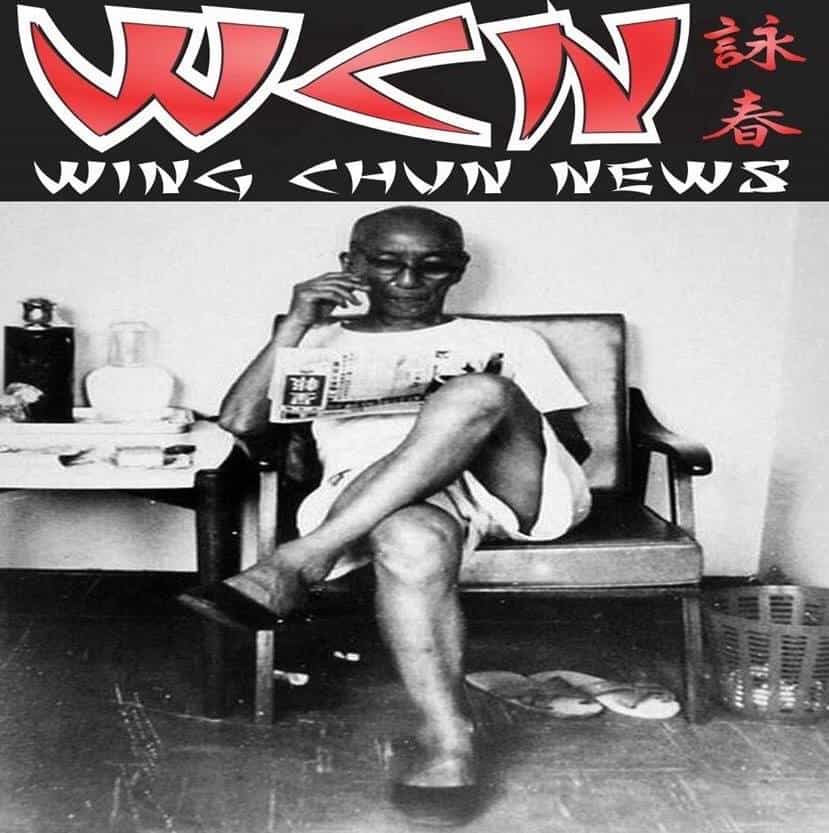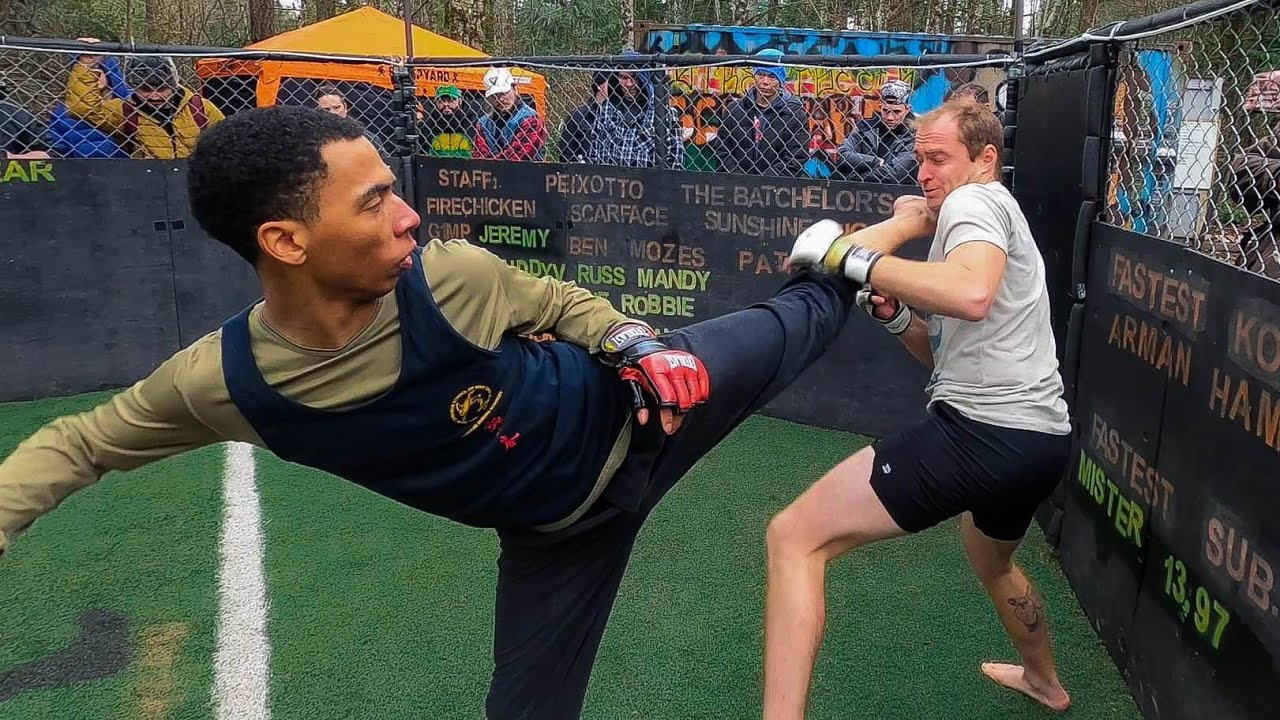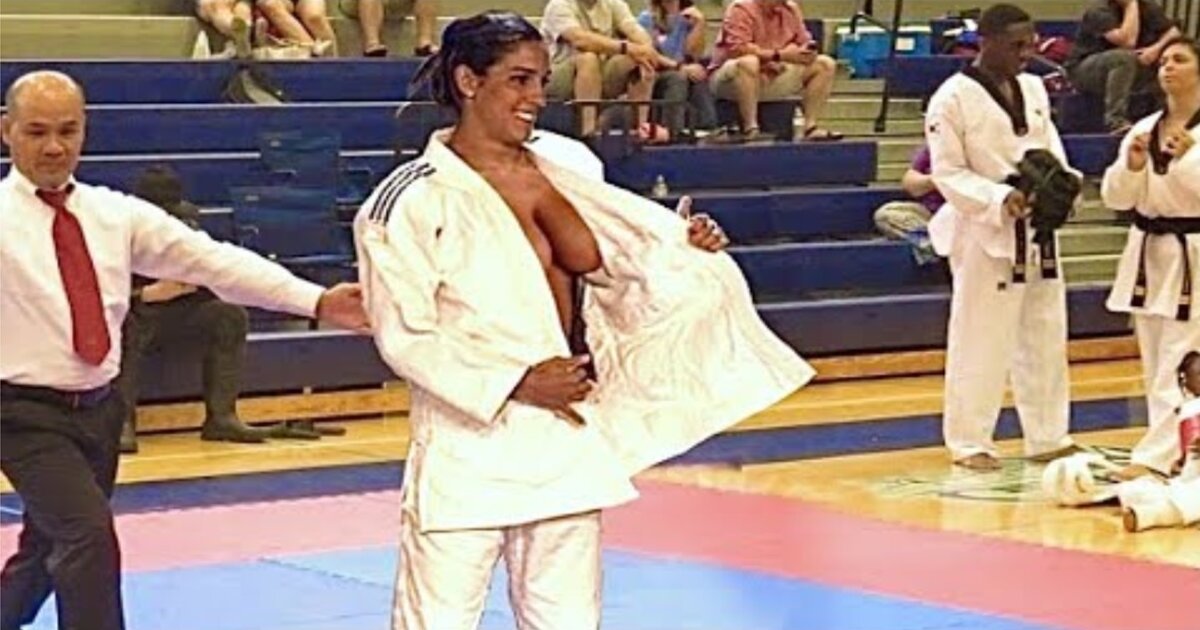The transcript below is from the video “Don’t Mess with Wing Chun Master | How to become a Wing Chun Master” by Brutal TV.

Brutal TV:
What does it take to become a Wing Chun master?
Wing Chun is a concept-based traditional southern Chinese Kung-fu style and form of self-defense that requires quick arm movements and strong legs to defeat opponents. It is one of the youngest and most contemporary styles of Kung Fu having been constantly refined and adapted over its 300 years of existence. The style uses kicks, sweeps, elbows, palm strikes, punches, tapping, and control techniques as part of its fighting arsenal.

Brutal TV:
Wing Chun differed greatly from other Kung Fu styles of the time. It was not based on imitation such as directly copying animal movements but on natural scientific laws, eliminating unnecessary movements to overcome and generate force in the most efficient way. In this video, we are going to take a closer look at the training and time involved to become a Wing Chun master. But before we do this, remember to give us a thumbs up and a quick click on our subscribe button to get more videos like this one and support Brutal TV. Thanks. But for now, let’s go back to Wing Chun!

Brutal TV:
Considered to be one of the three great martial art styles of Southern China, Wing Chun was founded during the Qing dynasty by Buddhist nun Ng Mui of the famed Shaolin Temple.
Ng Mui, one of the top five fighters of the day, aimed at designing a more effective fighting method which did not rely on brute strength to be effective. Legend has it that she found her inspiration after witnessing a fight between a stork and a large rodent, where the stork was able to repel the rodent’s attacks by using its wings and legs to attack and defend simultaneously. She named her new style Wing Chun, after one of her top students Yim Wing Chun, who used it to defend herself against an unwanted suitor.

Brutal TV:
Over the years, Wing Chun has been handed down only to a small number of dedicated students, who in turn have gone on to teach others, including grandmaster Yip Man. Yip Man is credited with having rescued Wing Chun from having been wiped out in the Chinese cultural revolution by migrating to Hong Kong in 1948 and introducing the style to the general public. Renowned as a teacher and an invincible fighter, he is considered to have refined and further perfected the system.

Brutal TV:
So what does it take to become a master of Wing Chun? In short, time and practice.
There is a lot to learn when it comes to this martial art and it is not done with speed. Depending on the student and school, it can take about 5-10 years to reach the most advanced belt level which is called Sifu. But that’s not where it ends. After this, depending on the school, there can be at least 3 more levels.

Brutal TV:
The most common system of forms in Wing Chun consists of 3 empty hand forms, 2 weapon forms and a wooden dummy form. The first and most important form is Siu Nim Tau, which is practiced throughout the practitioner’s lifetime. It is the foundation or seed of the art, on which all succeeding forms and techniques depend. Fundamental rules of balance and body structure are developed here. It serves as the basic alphabet of the system. The Siu Nim Tau teaches how to build up structure and achieve a relaxed state, which is necessary for the proper generation of force and the development of Wing Chun’s power of relaxation.

Brutal TV:
We are now at the halfway mark. So just a reminder to like this video and subscribe to Brutal TV for more top quality fighting videos. Now, back to Wing Chun!
The 3 basic hand works of Wing Chun: the Tan Sau, Bong Sau and Fook Sau, form part of the arc of a circle or sphere. These movements are performed through the rotation of the circle at its center such as the ball joint in the shoulder. As a spherical shape can withstand a much stronger external impact than any other shape, these movements are highly effective for attacking and defending in a self-defense scenario.

Brutal TV:
The second form: Chum Kiu, focuses on coordinated movement of body mass and entry techniques to bridge the gap between practitioner and opponent and move in to disrupt their structure and balance. By focusing correctly, turning the body around the center and ignoring the resistance, you can turn effortlessly and the person resisting will just come along for the ride. Close range attacks using the elbows and knees are also developed here. The Chum Kiu form also teaches the development of the multi-vector force. An example being a stepping movement with a simultaneous Bong Sau and Dai Sau. As the body moves to the side, one arm creates a circle with the Bong Sau movement, while the other performs a raising Dai Sau movement, thereby creating three vectors of force. The combination of the three force vectors results in the generation of a tremendous amount of force.

Brutal TV:
The last form: Biu Jee, is composed of extreme short range techniques, low kicks and sweeps, and emergency techniques to counter attack when structure and center line have been seriously compromised, such as when the practitioner is seriously injured.
As well as pivoting and stepping developed in Chum Kiu, a third degree of freedom involves more upper body and stretching is developed for more power. Such movements include close range elbow strikes and finger thrusts to the throat.

Brutal TV:
Learning these three forms of Wing Chun will achieve the black belt equivalent Sifu. After this comes the intermediate level which is Muk Yan Jong. This is performed on a wooden dummy which serves as a tool that helps the student to use Wing Chun Kiu against another human opponent. The benefits of learning Muk Yan Jong include improving power from the waist, conditioning of the hands and arms, and it teaches the student the correct distance.

Brutal TV:
Traditionally, Wing Chun predominantly consists of two weapons, butterfly swords and the dragon pole. The dragon pole is tapered wooden pole ranging anywhere from 8 to 13 feet in length. The pole has the advantage of its length and linear movements in attack with a minimal circular movement in defense. This technique, combined with the most efficient footwork in both attack and defense, allows the exponent to move in and out of range like lightning. In fact, it is said that once you hear the first impact of the pole, the victor has already been decided.

Brutal TV:
Butterfly swords are used in several Chinese martial arts. In Wing Chun, one notable aspect of butterfly sword combat is that its principles are the basis for all other weaponry. In theory, any object that can be held in the hands of a Wing Chun practitioner, will follow the same basic principles of movement as the butterfly swords. This is because the use of butterfly swords is simply an extension of empty-handed combat.

Brutal TV:
Becoming a Sifu and Wing Chun means that you are certified by your teacher to teach others. It is recognition of your ability to pass on the knowledge that your teacher has taught you. Although some translate the word Sifu to mean master, the real direct translation of the term Sifu has two characters; one for teacher and another for father. In some schools, it can take seven years to become a Sifu. As for becoming a master, that can take a lifetime.
Wing Chun is a vehicle for self-discovery and self-improvement and you never stop learning it.
What do you think of Wing Chun? Have you ever practiced the style? Tell us in the comments below. Don’t forget to like and subscribe to Brutal TV for more top fighting videos just like this one. Thanks for watching. We’ll see you next time.








